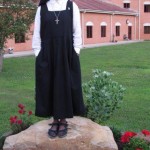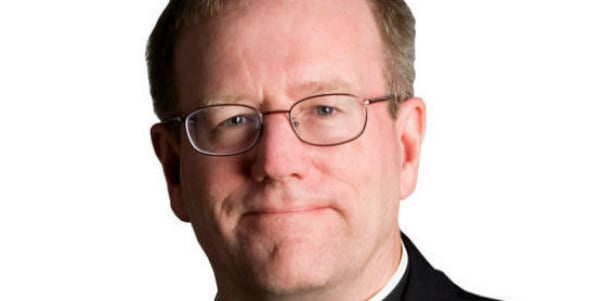February is Black History Month, and to kick it off historian Dr. Pat McNamara brings us a fascinating story that thrilled and shamed me. What a remarkable family of faith existed in the sons and daughters of Michael Healy and Eliza Clark; they became priests, nuns and even a bishop emerging from their home in Georgia, where mixed-race children were called “slaves.” But none of it came easily or peacefully in 19th century America:
By any standard, the Healys were an impressive family. Michael, the father, was an Irish immigrant who became a successful Georgia planter. His children included two nuns, a Coast Guard captain, a bishop, and two priests (one of them a university president). They seemed the quintessential Irish Catholic clan.
But they harbored a secret, one that by 19th-century white America’s standards was considered terrible. Their mother, Eliza Clark, had been a slave on their father’s plantation. Although Michael and Eliza had a committed, exclusive relationship, Georgia banned interracial marriage and defined their children as slaves.
So Michael sent them North. The girls boarded with family friends in Boston, and the boys enrolled at Holy Cross College, a Jesuit school in nearby Worcester. Boston Bishop John Fitzpatrick, a friend of Michael, looked after them. The boys all found Holy Cross a positive experience. For James (1830-1900), Patrick (1834-1910), and Sherwood (1836-1875), it was where they decided to become priests.
It wouldn’t be easy, because many white Catholics, clergy included, shared the prejudices of the day. But Bishop Fitzpatrick and the Holy Cross Jesuits did all they could to help the Healys. The bishop sponsored James and Sherwood for his diocese, and Patrick joined the Jesuits. In a shameful reflection of the era, no American seminary would take them, so the brothers were forced to study abroad, in Canada and Europe. Their sisters had to travel to Canada to find a religious community that would accept them.
Read on… Of everything you read on the internet today, this story is probably going to be the one that will stay with you – that you might find yourself wanting to read again. I was fascinated and moved, proud and disgusted, as a Catholic, as an American. Mostly, though I am just happy to get to know the Healy brothers, and their anonymous nun sisters, somewhere up in Canada.
Another great story for the month’s celebration, back in November McNamara wrote about the highly successful sculptress Edmonia Lewis
Her first work to attract attention was a bust of Robert Gould Shaw, a local hero who was killed leading African-American troops (Matthew Broderick played Shaw in the 1989 film, Glory). By 1865, at age 20, she had raised enough money to move to Rome and its well established artists’ colony. In a New York Times interview titled “Seeking Equality Abroad,” she stated:
I was practically driven to Rome, in order to obtain the opportunities for art culture, and to find a social atmosphere where I was not constantly reminded of my color. The land of liberty had no room for a colored sculptor.
In Italy she found a “real republic,” where people “left their race prejudices at home.” She stayed there for the rest of her life.
Lewis’ career intersected with a neoclassical revival in the art world, and she brought a fresh approach to that tradition. Her subject choices reflected her background and interests: Native Americans, African-Americans, biblical figures, and celebrities. When Henry Wadsworth Longfellow visited Rome, Edmonia secretly followed him around the city, sketching a bust of him that Harvard University purchased.
Two good pieces on fascinating and gifted Americans living extraordinary lives under difficulties we can hardly imagine.
Meanwhile, Deacon Greg Kandra brings the news that the Archbishop of New Orleans is publishing the baptismal records of slaves online – Greg calls it “A powerful and painful piece of history,” and quotes the New Orleans Times-Picayune:
Officials cautioned that the records are rarely useful by themselves. But armed with data like civil census or city real estate data, they give even experienced amateurs everywhere a new tool with which to locate an enslaved ancestor.
Because slaves were not given last names that can be indexed, they have never been listed in genealogical databases currently in use, church officials said.
The records note the baptisms and funerals of slaves presented at the altar with only first names, stripped of the humanity of family names, Archbishop Gregory Aymond said.
They make plain the brutality of slavery. But the internet publication of the most important events of their lives offers a belated measure of dignity, Aymond said.
The database was launched on the first day of Black History Month.
Access those baptismal records here
Unrelated, but reads you may find interesting, nonetheless:
Tim Muldoon looks at the Super Bowl and finds it a Homeric Tub of Love
Dwight Longenecker wonders how to teach people when they don’t know what they don’t know
Lisa Mladinich brings in a guest columnist who looks at The Rite, and the Wrongs
















